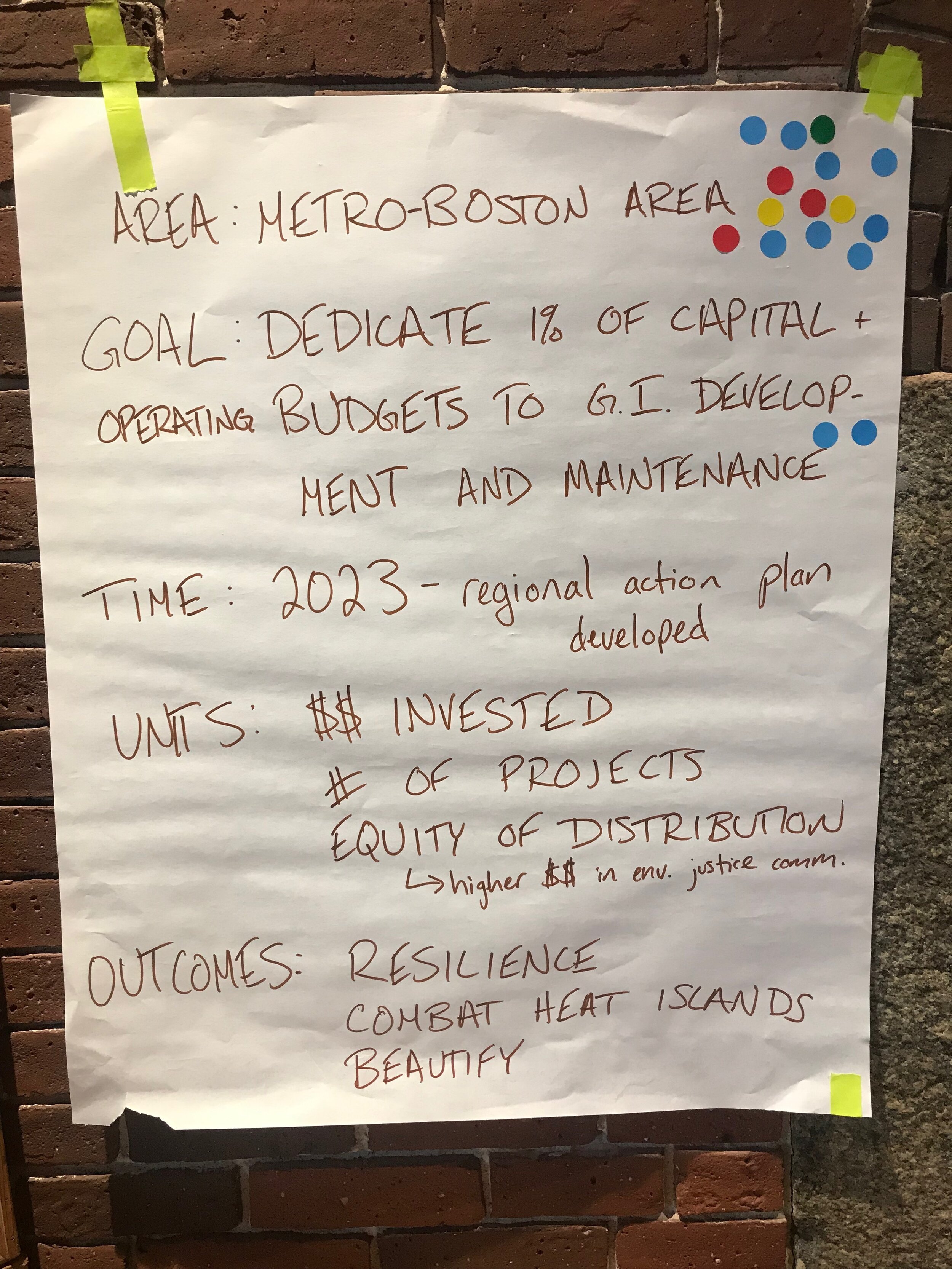GI GOALS + TARGET SETTING
Group 1
All municipalities and state agencies adopt a cohesive policy, for the Metro Boston area, to expand tree canopy by 20% annually, by 2024. The policy will include a replacement plan for existing trees.
Group 2
Implement a regional infrastructure coordinating committee:
Proposed as part of Climate Ready Boston – convening of infrastructure providers
Suggest expanding to regional scale
Infrastructure not limited to city boundaries
Benefits of infrastructure / GI not limited to city boundaries
Timeframe: established 2021
Unit: new legislation for dedicated funding source (capital + O&M funds); participation and leadership buy-in
Salient Outcome: Shared plans and budgets; measured/shared monitoring strategies
Group 3
Dedicate 1% of capital and operating budgets to GI development and maintenance
Timeframe: 2023 – regional action plan developed
Units: $$ invested, # of projects, equity of distribution (higher $$ in environmental justice communities)
Group 4
Green roofs: % of new development must include green roofs
Beach closures: reduce beach closures by XX% through building GI in the beach’s watershed area
Rain barrels: increase participation in local rain barrel program by XX%; implement rain barrel program in all metro Boston communities
Urban forest: establish a regional canopy cover goal and determine guidelines for species selection
Regional GI incentives/policies: establish regional GI incentives; XX% of GI projects must be in environmental justice communities/neighborhoods
Impervious surface: reduce impervious surface coverage by XX%
Group 5
5% impervious cover reduction (fixed/tied to baseline)
Considerations: how to measure, New Hampshire TMDL example
1 million added trees for Metro Mayor region
Peak runoff / future-oriented targets
E.g. 25:2 model; 25 year / 2 year, mitigate difference
10% adoption (retrofit?) of “green street” infrastructure projects and “green school lots”
GI ACTION PLANNING
Regulatory Tools
Getting municipalities to pass standardized off-site mitigation measures (short term)
Regional agreement around tree replacement and planting (short term)
Funding/financing
Evaluate capital improvement plans for GI opportunities (short term)
Consider non-traditional partnerships, e.g. private foundations + utilities (long term)
Statewide regulation mandating green infrastructure funding (long term)
Operations + Maintenance
More workshops for DPW folks who are responsible for stormwater/GI design and O&M (short-term)
O&M standards manual for each type of GI (medium term)
Regional messaging / interpretive signage clearing house (short-term)
Making the Case for GI / Other
Create a certification program or continuing education credits for municipal staff (short-term)
Create a regional database with local case studies and possible relevant GIS layers (short-term)
Database of GI projects + status for learning, sustainability, and long-term data on impacts (long-term)
GI database + tracking system (long-term)
Photo Gallery from September 2019 Workshop
Do you have photos that you’d like to share? Email them to media@eartheconomics.org







